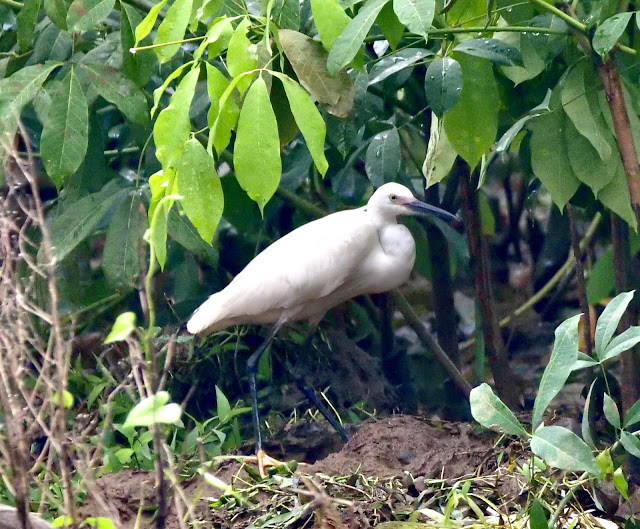The above photos of Munia, family of white bellied drew my attention. They are migrant birds found during this season in the agricultural land below our cottage beside a stream, where a rubber stationary is thriving now.
It was a cloudy evening with no features of the golden hour for photography, downcast with low light at five in the evening. The Munia birds were fluttering in the air with their upward and downward flight activity in twos and threes. It is this sight from our courtyard that triggered me to move out in to the field with an umbrella in my hand.
It was a delight to watch them perched in the cable, engaged in grooming and communicating to each other. It might be their mating season, which was what their body behaviour indicated.
These small birds often are seen in groups. There were six in this group. I noticed how their plumage looked dry and glossy, although it rained heavily about an hour back. They are skilled to be flight ready, all the time. They go high up in the sky almost loosing to our sight except through a zoom lens.
Is it not amazing how they adapt and survive well. Their bird calls sound just audible. Their movements of the beaks indicated the almost inaudible bird calls.
They are birds who normally live in green land and bushy areas. The urbanisation is a threat to them. The Javan Munia birds were noticed in Indonesia and later in Singapore and Malaysia. Now we can spot them seasonally in India. The white bellied Munia might have another habitat.
They are small birds of about 10 cm or less in length with a bulky body with attractive bills and plumage with vertical white stripes of short length, noticeable on the body feathers.
I was about to return as dusk had set in by then. I found their behaviour towards each other caring and comforting.
But I stayed longer spotting this little Egret!
What fascinated me about this wet land bird is its long tuft of feathers behind its head, which is sometimes missing in some little Egrets. If my memory is correct, I do not have photos of little Egrets with this distinguishing feature.
It moved about slowly in that narrow space adjacent to the stream. Its body movements and alert look all around gave me a sense that it was looking for its flight path. I managed to get the above photos and the photo I took of its flight got blurred in the dim light!
The contrast between the Munia birds above and the little Egret, was not just the size or flight behaviour, but the habitat. The Munia likes dry places and the little Egret looks for wet places.
The Munia would find the daily bread wherever it is, but a little Egret would need wet land to find its feed. Someone told me that Egrets by habit have stressful times during seasons when the ponds or streams dry up or land areas do not water bodies nearby. Their behaviour during such stressful seasons is migration by flying long distances. He happened to mention that Egrets are least intimidating towards other birds. Their stressful experiences make them more tempered, I presume.
It is because of what we endure or learn to adjust to, we become tolerant, sympathetic, and mindful!
M.C.Mathew(text and photo)














No comments:
Post a Comment